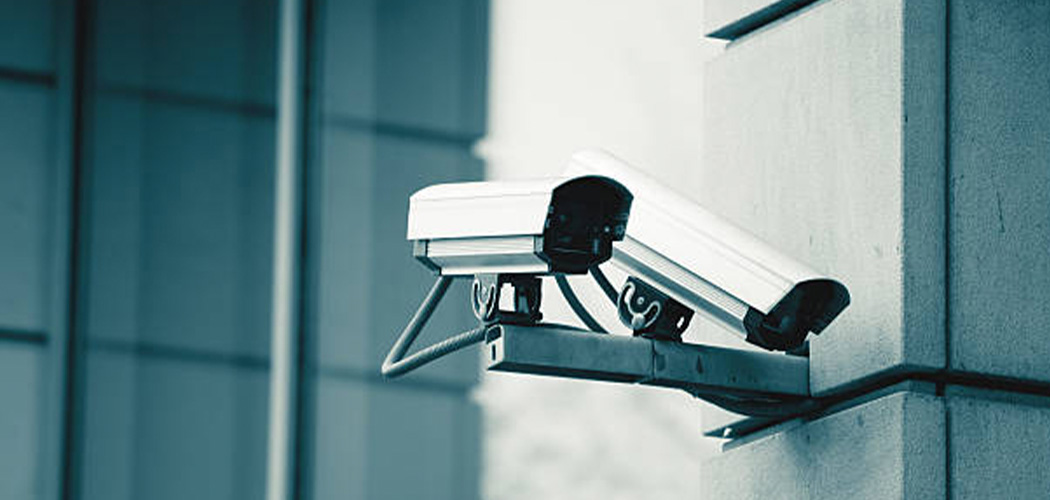If you are in a public place whilst reading this, particularly if you are in a metropolitan city, chances are you will be sitting in a place where your every move – and word – is being captured by CCTV.
Disclaimers may be plastered all over the walls stating that you are giving up any rights to privacy. Your mere existence in that place at that time, resulting in an implied acceptance of the disclaimer. Many of us are used to a life of CCTV in public places, but what about our workplace?
Is there a right to privacy in the context of nursing practice? I’ve previously written about privacy in the context of digital existence – the extent and perpetual nature of your exposed online existence. However, with 89.9% of Australia’s population owning smart phones with video and audio recording capabilities,1 privacy in the workplace is increasingly at risk.
Covert and overt recording of another person in healthcare is often considered in the context of patient privacy and confidentiality, with reference to the need to ensure consent is obtained from patients2 and data security promoted.3
Often patient privacy is a concern in mental health units4 and emergency department settings5 where CCTV is used to promote the safety of patients in settings where there is a risk of aggression or violence. With the advancement of technology, privacy principles are being tested to the extreme with pilot projects already underway where nurses and emergency department staff use body worn cameras on shift to promote their safety.6 Similar advances are also evident in the operating theatre. Although recordings of laparoscopic procedures for surgeons’ private self-evaluation post operation have been used for decades,7 video recording is now being used in general surgery to record the performance of the multidisciplinary team for purposes of reflection and learning.8
What is clear here, is that the purpose of the recording is significant. Whilst the Privacy Act 1988 (including the recent amendments) doesn’t specifically cover surveillance in the workplace, the Australian Privacy Principles set out stringent, limited circumstances where an employer can record an employee in the workplace. Many will be surprised to learn that a patient recording a nurse or a student recording an academic is permitted by law, providing that surveillance only records a private activity to which the recording person is a party. Although nurses and midwives or nursing and midwifery academics are in their workplaces, a patient or student nurse, in most jurisdictions, is not prevented by law from filming their interactions with a nurse or midwife (sections 3 and 7 of the Surveillance Devices Act 1999 (Vic). Section 11(1) of the Surveillance Devices Act 1999 does, however, make it an offence for a person to ‘knowingly communicate or publish a record or report of a private conversation’ obtained from a recording, unless the consent of all parties involved has been obtained. Whilst a conversation with a patient may be considered ‘private’, it is the patient’s privacy that is protected – not that of the nurse.
Although privacy is legislatively governed on a state-by-state basis, in most jurisdictions video recording (in the circumstances outlined above) is permissible (except in South Australia and Western Australia).
Although not required, clinicians will often give consent to be recorded for private use only. Although there are no legislative protections to prevent being recorded, safeguards are in place to manage the use of the recording, such as the admissibility of evidence and the ability to seek civil law remedies of injunctions to have published material removed.
Often by the time these remedies are applied, there may have been significant and serious consequences of the publication of the material, such as reports to professional bodies and imputations to nurses’ and midwives’ reputations.
Studies have found that nursing and midwifery staff are, to say the least, uncomfortable about the prospects of being video recorded by their patients. Similar concerns have been raised by nursing and midwifery academics, who are increasingly recorded by their students. Risks to clinician safety and welfare as well as increased clinician stress have been cited as reasons against permitting patients video recording requests.9 In many ways, the issue of healthcare services or nurses filming patients is relatively simple to work through. CCTV conflicts with nurses and midwives legal and ethical obligations to protect their privacy of their patients.10 We are required to promote private surroundings for private and confidential consultations and discussions to take place.11 However, there are no such safeguards protecting the privacy of nurses or nurse academics’ practice.
With existing legislation focusing on the protection of patient confidentiality and in the context of high availability of recording devices and quick access to publication methods, attention needs to be turned to protecting nurses and midwives’ privacy in their workplace. Whether in clinical practice or teaching, consider if your workplace has a policy on student or patient recording of staff and start a workplace privacy conversation.
References
1 Roy Morgan. 2019. Article 8032 Australians are bringing their own phone to new mobile plans. Available from https://roymorgan-cms-dev.s3.ap-southeast-2.amazonaws.com/wp-content/uploads/2022/06/08024302/8032-Mobile-Phone-Trends-March-2019.pdf
2 Walsh R, Kearns E, Moynihan A, Gerke S, Duffourc M, Compagnucci M, Minssen T, & Cahil R. 2023. Ethical perspectives on surgical video recording for patients, surgeons and society: A systematic review. BJS Open, 7(3), https://doi.org/10.1093/bjsopen/zrad063.
3 Chandawarkar R, & Nadkarni P. 2021. Safe clinical photography: Best practice guidelines for risk management and mitigation. Archives of Plastic Surgery, 48(03), 295-304, https://doi.org/10.5999/aps.2021.00262.
4 Appenzeller Y, Appelbaum P, & Trachsel M. 2019. Ethical and practical issues in video surveillance of psychiatric units. Psychiatry Online, 71(5), https://doi.org/10.1176/appi.ps.201900397.
5 Illarda E, McIlveen P, Tynan A, & Senz A. 2023. Emergency department staff experiences of the Broset Violence Checklist. Journal of Advanced Nursing, 80(5), 2027-2037, https://doi.org/10.111/jan.15961.
6 Spencer E. 2024. Using body-worn cameras in emergency department: A pilot project. Emergency Nurse, 32(5), 20-24, https://doi.10.7748/en.2024.e2188.
7 Gvenetadze A, Datoshvili N, Khonelidze L, & Nusubidze M. 2003. Using laparoscopy in uterine tubes surgery. Annals of Biomedical Research and Education, 3(1).
8 Gabrielle M, Valera L, & Barrientos M. 2020. Audio and panoramic video recording in the operating room: Legal and ethical perspectives. Journal of Medical Ethics, 47, https:doi.org/10.1136/medethics-2019-106056.
9 Ryan L, Weir K, Maskell J, & Le Brocque R. 2022. Smartphone standoff: A qualitative study exploring clinician responses when a patient uses a smartphone to record a hospital clinical encounter. British Medical Journal Open, 12, https://doi.org/10.1136/bmjopen-2021-056214.
10 Nurses and Midwifery Board. 2018. Code of Conduct for Nurses, https://www.nursingmidwiferyboard.gov.au/codes-guidelines-statements/professional-standards.aspx
11 AHPRA Shared Code of Conduct, 29 June 2022.
Author
Rebecca Millar is a forensic mental health nurse and lawyer and is in the nursing program in the school of Health and Biomedical Sciences at RMIT








